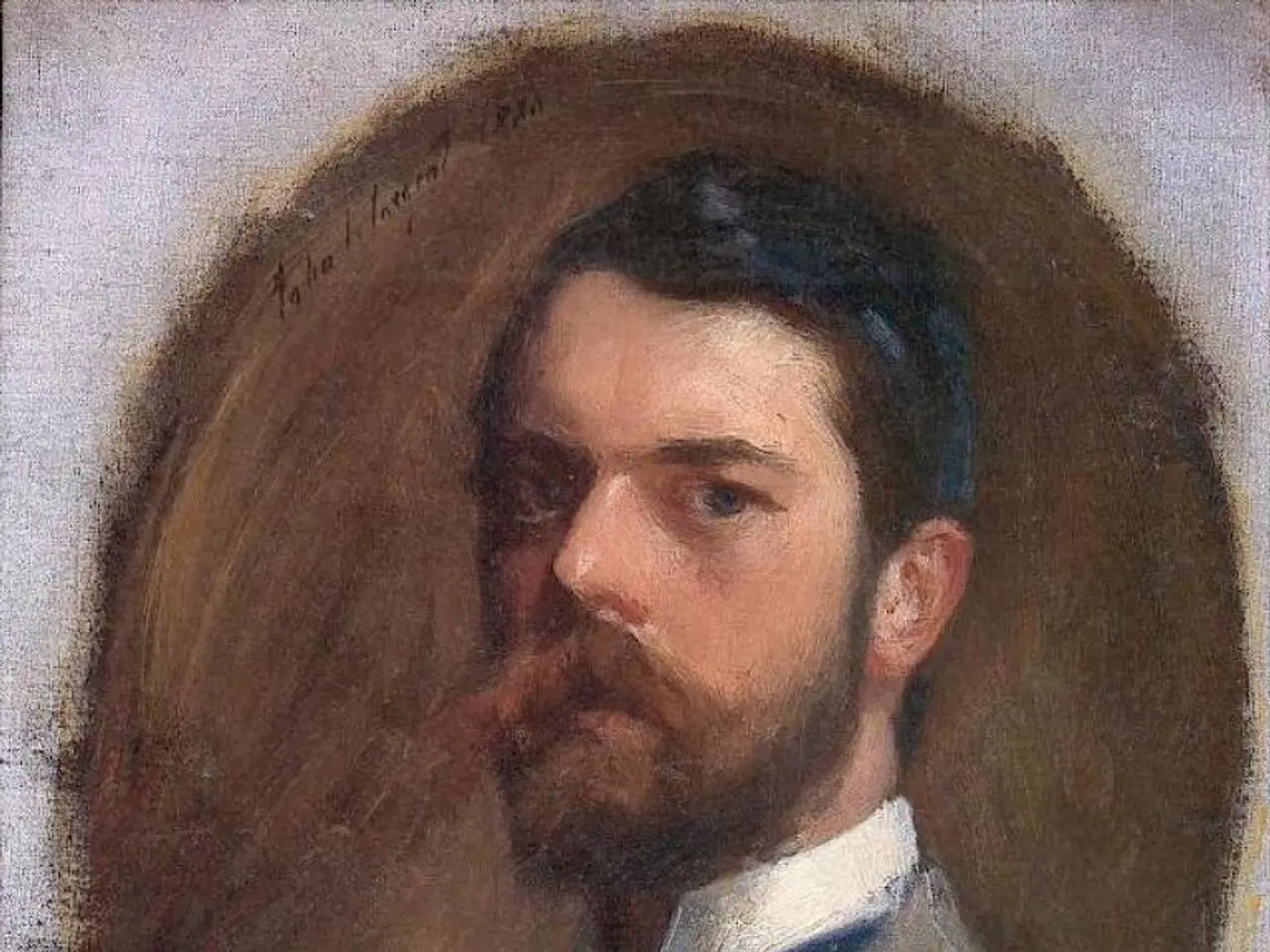"Exploring the boundaries of artistic expression: a glimpse into Claire Luxton's day"
In a recent interview as part of a Day in the Life series, British contemporary artist Claire Luxton shared insights into her creative process, artistic influences, and the role of technology in her work. Known for her ethereal aesthetic that explores the tension between constructed femininity and alluring vulnerability, Luxton's practice encompasses photography, immersive installations, and poetry.
Luxton's creative process is fluid and reflective. She begins her day with moments of stillness, such as reading, writing poetry, or walking in the countryside, which she says helps ideas to surface naturally. Her studio days vary widely, with some spent sketching concepts or editing photography, while others involve hands-on work with materials or constructing immersive installations. If she is mid-installation, her process becomes more physical and collaborative, involving troubleshooting technical elements with external teams.
Surrealism is a significant influence on Luxton's work. She references the mysterious and dreamlike quality inherent in surrealist art, which informs both her visual language and her immersive installations. Her award-winning piece, *Right Before We Wake*, exemplifies this—inviting viewers to explore enigmatic, dream-state moments. Luxton's art navigates the boundaries between reality and fantasy, echoing the surrealist preoccupation with the subconscious.
While Luxton's approach is multi-disciplinary and often involves a variety of materials and media, she has expressed appreciation for digital drawing tools. For example, she has been associated with using the Huion Kamvas 16 (Gen 3) drawing tablet, which supports her digital and mixed-media creations. However, her work also remains rooted in traditional methods—sketching, photography, and physical installation—reflecting her versatile approach to creativity.
Luxton is engaged with the rapid advancement of artificial intelligence and its implications for art. She recognizes both the challenges and the opportunities AI presents for contemporary artists. While specific details about her stance are nuanced, her openness to technological innovation is evident in her willingness to question and explore new forms of artistic expression, including how digital tools and AI might shape creativity in the future.
Throughout her career, Luxton has worked on public art projects for The Crown Estate, Westminster, and Westfield Forum des Halles, as well as creating custom projects for brands like Hendricks, Wedgwood, and L'Occitane. Her work has been celebrated for its ability to challenge traditional notions of femininity and vulnerability, offering a fresh perspective on these themes.
In the interview, Luxton also shared career advice she would give to her younger self, providing valuable insights for aspiring artists. Overall, her insights offer a unique glimpse into the life and work of a contemporary artist navigating the intersection of traditional and digital art practices, while remaining grounded in her surrealist inspirations.
- Luxton uses digital drawing tools like the Huion Kamvas 16 (Gen 3) drawing tablet in her creative process, complementing her traditional methods such as sketching, photography, and physical installations.
- Her art is influenced by surrealism, reflecting the mysterious and dreamlike quality inherent in surrealist art and navigating the boundaries between reality and fantasy.
- In her studio days, Luxton sketches concepts, edits photography, or works on immersive installations, while also being open to collaborating with external teams when constructing installations.
- The role of technology in Luxton's work is significant, as she recognizes both the challenges and opportunities artificial intelligence presents for contemporary artists.
- Luxton's ethereal aesthetic explores the tension between constructed femininity and alluring vulnerability, offering a fresh perspective on these themes.
- She has worked on public art projects for various esteemed entities, including The Crown Estate, Westminster, and Westfield Forum des Halles, and has created custom projects for brands like Hendricks, Wedgwood, and L'Occitane.
- Luxton's career advice to aspiring artists provides valuable insights, offering a unique perspective for those pursuing creative careers in art, design, business, or finance.
- As part of Adobe's Creative Cloud family, artists like Luxton have access to tools such as Photoshop, which can aid in her illustration and design work.
- The color and layout choices in her artwork are crucial in conveying her surrealist aesthetic, with photography playing a key role in capturing and presenting her ethereal and enigmatic visions.




